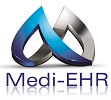Introduction — Why EHR Integration Matters for Clinicians
In today’s healthcare environment, seamless integration is no longer optional — it’s essential.
When your EHR system doesn’t communicate effectively with lab systems, billing software, or imaging platforms, it creates bottlenecks and increases clinical errors.
That’s why Medi-EHR, one of the best EHR software in the USA, focuses on smart interoperability — helping healthcare providers unify data across all systems to deliver faster, safer, and more coordinated care.
Step 1 — Identify Integration Needs and Workflow Gaps
Before implementing integrations, analyze where your practice struggles with disconnected systems or manual data entry.
Common Pain Points
- Delayed lab results due to manual uploads
- Billing errors caused by disconnected finance systems
- Duplicated patient records
-
Inefficient communication between care teams
Medi-EHR helps identify these workflow gaps and offers integration options for labs, pharmacies, insurance providers, and diagnostic tools — all within a single platform.
Explore Medi-EHR Clinical Modules for Integrated Workflows
Step 2 — Choose a Flexible, Interoperable EHR Platform
A truly clinician-ready EHR must support open integrations through APIs and HL7/FHIR standards.
This ensures that your EHR communicates smoothly with external systems — from imaging to pharmacy to insurance networks.
Medi-EHR’s interoperability framework allows clinics to integrate easily with:
- Laboratory Information Systems (LIS)
- Pharmacy and E-prescribing platforms
- Billing and RCM systems
-
Patient engagement tools
Step 3 — Ensure Data Accuracy, Compliance, and Security
Integrations are only as strong as their data integrity. When systems exchange information, it’s vital to maintain accuracy, consistency, and HIPAA compliance.
Medi-EHR uses advanced data validation and encryption tools to ensure that every integrated module meets strict regulatory standards.
Key Security and Compliance Features
- End-to-end data encryption for all transfers
- HIPAA & HITECH compliance
- Automated data syncing to prevent duplication
-
Audit trails for every user activity
With Medi-EHR, clinicians can rely on clean, accurate data for decision-making — while maintaining complete patient privacy.
Step 4 — Train Clinicians and Optimize the Workflow
Even the most advanced integrations fail if end users aren’t comfortable using them.
That’s why training and optimization are key to ensuring that clinicians can make the most of new EHR integrations.
Medi-EHR provides customized onboarding programs to help healthcare professionals adapt quickly and work efficiently.
Training Benefits
- Step-by-step user orientation
- Hands-on tutorials for clinical staff
- Real-time support from Medi-EHR specialists
-
Workflow optimization for multi-specialty teams
When clinicians are confident with their tools, they can focus more on care and less on technology.
Why Medi-EHR Is the Best Choice for Seamless EHR Integrations
As one of the best EHR software in the USA, Medi-EHR leads the way in creating interoperability between systems that matter most to clinicians.
Key Advantages of Medi-EHR Integrations:
- Plug-and-play compatibility with major healthcare platforms
- Specialty-specific customization
- Real-time synchronization and automation
- HIPAA-compliant cloud-based infrastructure
-
Dedicated technical and clinical support
Contact Medi-EHR for a Free Demo
Final Thoughts
A well-integrated EHR is the cornerstone of modern healthcare efficiency.
By following these four essential steps — identifying needs, choosing flexible integrations, ensuring data security, and training clinicians — your practice can achieve true interoperability and productivity.

